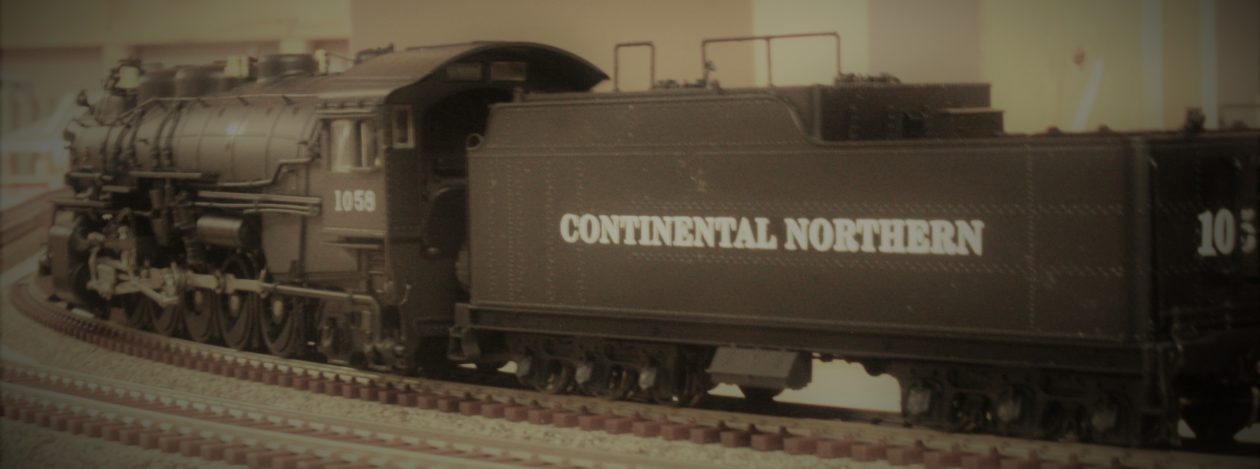This is my first DCC conversion as opposed to my first decoder install as the early Athearn, Bachmann and LifeLike engines came DCC ready. All you had to do was pop out the jumper plug and add the decoder. All were without sound. Ah yes, a project for another day.
As I had mentioned before the test subject is a Athearn Blue Box SD 40-2. I also had mentioned that I had started this project about 10 years ago. Not much was really accomplished, I had gotten a couple of things for the conversion and started working on the shell.
What I had accomplished at that time was cutting out the front radiator fan and fitting a winterization hatch to it. Not sure of the brand but it has an etched metal grill. Perfect for a speaker to be mounted under it. I also had built the baffle for the speaker. Again not sure of the brand of speaker, though I suspect it is from Sountraxx. In addition to the speaker the other purchase at the time was a better motor than the stock Athearn. It is from Accurate Lighting and a quick web search shows that you can still get them from HobbyLinc.com.

The speaker baffle and winterization hatch.




Once I do the final install on the speaker I will close up the enclosure. Also the four wires on the motor are for a an install on a standard DC locomotive, one pair to each truck. I will clip one set when hooking up.
Having the motor in place and the speaker ready to install the next step was to get power from the tracks. Using wire on hand, I soldered wires directly to the trucks. Red to the high side, this would be the one on the BB Athearn that had the metal bar running across the top of the motor and black to the low side on top of the truck.

Unfortunately the scrounged wire was too brittle. A little handling and one broke off right away. So, off to the internet, specifically Amazon where I found a very flexible 28 gauge wire. Unsoldered the old and installed the new.

Let there be light…
Part of the conversion was adding new lights to the engine. I believe one of the reasons I had not gone much further with the project was that I needed to add new lights to the engine. The old Athearn incandescent bulbs were to big and I knew that even smaller incandescent bulbs ran hot, so clearance was needed as to not melt the plastic of the cab.
Well in the time between then and now, LED’s have really come into their own. I stumbled across LighthouseLED’s. Their selection is quite complete. Everything from 5mm down to pico size bulbs. Didn’t even know there was a pico size LED. And you can get any of them prewired with a resistor. Saves a lot of time and frustration. My first order included a white SMD LED mounted on a small resistor board with leads. It was hard to tell the size of the board from their diagram. It turned out to be about 1/4″ by 3/8″ (sorry, didn’t feel like running down and measuring). Which meant the it would show if using to light the front headlight. But it fit in perfectly to the rear of the engine for the rear light.


For the front I ordered a prewired 3mm bulb. I made a bracket out of styrene to hold it up in the headlight/number board housing. Still working on fit, will get you a couple of photos when placed. In addition I ordered some prewired pico sized bulbs that are amber. These are for the beacon on the cab roof. My thought was that when I got the bulb I would drill out the beacon and slide it in. Turns out I didn’t need to as Details West had already done this.




The decoder that I’m using is a Sountraxx Econami ECO-PNP. I chose this one primarily based on price and basic functions. It has standard motor functions, sound and front and rear lights. In addition it has several extra programmable functions. One of which is a Strato-Light beacon function. I have to image the decoder will make the beacon flash like the original. My dilemma now in seeing the size of the pico LED’s is do I want to add front wheel slip lights and step lights. Or keep it simple for first install and go with what I planned.
At this point I think I’m going to go with simple. I have all the parts ready to install. Just a little afraid after reading posts of people whose installs didn’t go as planned. But I’m ready to muscle past that, as I’m really wanting to see a diesel with a flashing beacon, something that doesn’t seem to be on many factory diesels.
As of now that’s where I’m at, will update in the near future.
Till then, happy modeling….































































